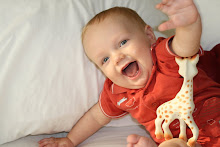By Julie Bisbee
The Oklahoman
Staff Writer
Tuesday, September 2, 2008
TECUMSEH — Three years ago, when the head of a state juvenile detention facility volunteered to accept all the female juvenile offenders in Oklahoma, the move was greeted with looks of disbelief and in some cases pity.
Today, however, the Central Oklahoma Juvenile Center has created a treatment program specifically for female offenders, and the program has become a model for other programs designed just for girls.
"We have a lot of people from other states who want to come in and see our program," said Gene Christian, executive director for the Office of Juvenile Affairs. "Very few states treat their female offenders dramatically different than their male offenders."
In Oklahoma, stemming the tide of adult female convicts is a priority. The state puts more women in jail, per capita, than any other.
At the juvenile level, officials are trying to treat problems that might otherwise send a girl down the path toward life as a criminal adult. The program for girls, whose crimes ranged from first-degree murder to assault and battery, is the first of its kind in Oklahoma.
In the past, female offenders were placed where space was available and the treatment and therapy programs were similar to what male offenders received, said Johnson, Central Oklahoma Juvenile Center's superintendent.
"They need different things," Johnson said. "You can't try to fit a square peg in a round hole. The girls need to talk more, they have questions and they have different issues."
Before the female offender program was put into place, girls who had been convicted of crimes were sent wherever there were open beds, usually the L.E. Rader facility in Sand Springs. When female offenders were consolidated, the Tecumseh facility had to take a look at the programs available. Boys were playing football and competing in volleyball tournaments.
The female offenders needed something different. Not all girls wanted to compete in tournaments or race in swim meets. Instead, the facility added programs such as quilting clubs, yoga, Girl Scouts and even a version of "Oprah's Book Club," Johnson said.
The uniforms the kids wear also changed. In the past, girls and boys wore square-cut jeans and different colored T-shirts that corresponded with their security level at the facility. Now girls and boys wear khaki pants that are more form-fitting, Johnson said. Girls also have a say in the type of swimming suits that are issued to teens.
There are 40 beds for female offenders at the Tecumseh facility, and while the number of female offenders has grown over the past few years, currently there are only 29 girls at the facility. Systemwide, female offenders make up about 10 percent of the total number of children serving time in a juvenile detention facility, according to figures from the Office of Juvenile Affairs.
Struggling through treatment
While juvenile offenders may have access to swimming pools, book clubs and radio-controlled airplane clubs, they also have to complete a treatment plan before being released.
"We hold them to it," Johnson said. "We hold their feet to the fire, and if we don't feel like they're making progress, we don't move them on."
Juveniles are not serving a sentence set by a judge, but rather completing a series of steps that will hopefully make it easier for them to cope in the outside world where temptation is great and offenders often fall back into old patterns with family or gangs. The approach isn't always popular, but officials say it works better than teaching kids to be "mini-DOC inmates."
Seth Trickey and Daniel Dillingham were both convicted of violent offenses and released from the juvenile system after completing all their phases of treatment.
Jordan, an 18-year-old from Oklahoma County, has been at the Tecumseh detention center for a little more than a year. She and her then-23-year-old boyfriend were convicted of killing Jordan's mother. Her mother had objected to their relationship, Jordan said.
Jordan is a soft-spoken, petite girl with a bright smile and soft voice. While being in treatment, she's had to understand her crime and her own personal weaknesses.
"I had a bad attitude when I came here. I didn't care about anything, and you couldn't tell me anything," she said. "There are things you do, that you don't realize are antisocial or anything. But when I came here they started pointing those things out to me, and that was hard at first."
Jordan has progressed, but still has plenty to work on. But while being at the juvenile detention facility, she's realized she has choices and goals for her life.
"Before I came here, I didn't have any goals," she said. "I was working as waitress in a restaurant, my mom was a waitress in a restaurant. I probably wasn't even going to finish high school. I like myself a lot more now."
Now she wants to pursue a cosmetology license and then eventually become a counselor, she said.
"I think I could help a lot of people," she said.
For Johnson, who has worked with troubled youth for nearly 24 years, giving kids a second chance is his motto.
"A lot of times kids get to come here to be kids," he said. "Some of them have never been to the movies before when the come here. ... We've just got to give them a chance to make positive choices."
Subscribe to:
Post Comments (Atom)

No comments:
Post a Comment